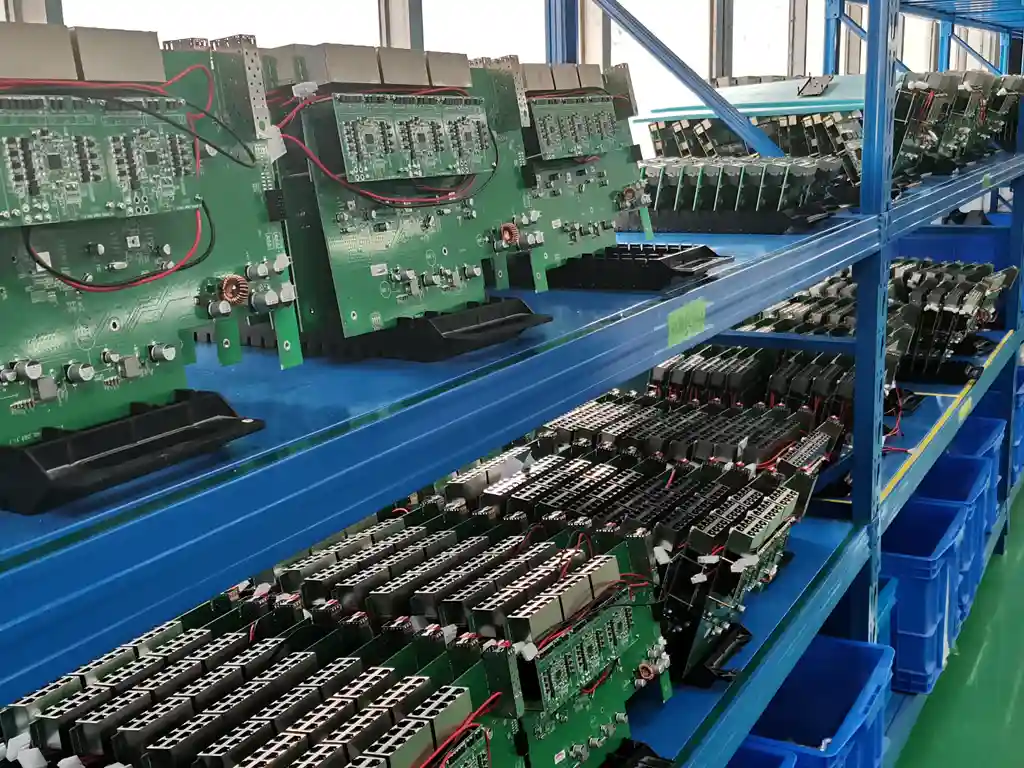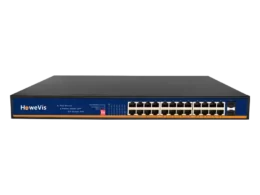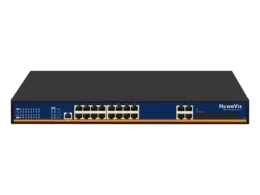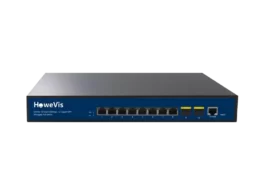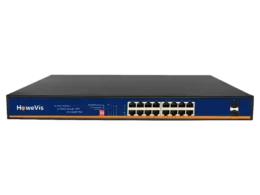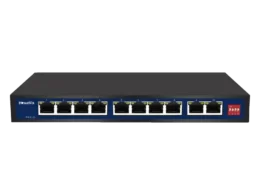Did you know that over 90% of network issues are caused by misconfiguration of switch ports and switch types? In networking, the debate between unmanaged switches vs. managed ones with varying ports is like choosing between a hands-off or a hands-on driving experience. We’re diving into the nitty-gritty to help you understand which type suits your journey on the information superhighway. With an unmanaged switch, simplicity is king – plug it in, and away you go. But if control and customization rev your engine, a managed switch offers gears and gadgets galore. Whether cruising through data lanes or tweaking traffic signals for peak performance, picking the right switch makes all the difference.
Unveiling Unmanaged Switches and Their Role
Plug-and-Play Nature
Unmanaged switches offer a simple setup. They work right out of the box. You don’t need to configure them. Just connect your devices, and you’re good to go.
This simplicity is perfect for us when we want quick results without fuss. It’s like getting a new switch-type gadget that works instantly after unboxing—no lengthy manuals or complicated settings needed.
Small Network Suitability
These switches suit small networks well. Think about our home office or a local café’s WiFi setup—they often use unmanaged switches due to their size.
Small businesses benefit from these, too. They can connect computers, printers, and phones with an unmanaged switch.
Cost-Effectiveness
Cost-wise, unmanaged switches are more affordable than managed ones. This makes sense for our budget when fancy features aren’t necessary.
We save money while still meeting our primary network needs effectively.
Managed Switches Explained: Enhanced Control and Flexibility
Advanced Features
Managed switches come packed with advanced features that go far beyond the basic functionality of unmanaged switches. With these, we can tailor our network to meet specific needs. The ability to configure settings for each switch port is a game-changer. It allows us to control traffic flow and prioritize certain types of data.
For example, if we are streaming video for a conference, we can adjust settings to prioritize this traffic over other data. This ensures smooth playback without interruptions.
Another key feature is support for VLANs (Virtual Local Area Networks). This lets us segment our network into smaller groups without needing separate hardware. It’s instrumental in keeping sensitive data apart from general traffic.
Customization Capabilities
The true power of managed switches lies in their flexibility and customization capabilities. We’re not stuck with factory settings; we can make configuration changes. Whether adjusting speed or setting up duplex modes, these options are at our fingertips.
Let’s say we will overhaul our office layout one day—no problem! We can quickly reconfigure the ports on our managed switch to accommodate new devices or changed priorities without buying new hardware.
This level of control extends even further with advanced security features available on managed switches. Admins can set up access lists or monitor connected devices more closely than ever.
Remote Management
One standout benefit of a managed switch is its remote management options. Imagine being able to tweak your network setup from anywhere in the world—that’s what these tools offer us. Administrators can log in remotely and make changes or troubleshoot issues without touching the device. This proves invaluable when managing multiple locations or ensuring continuous operation outside regular business hours. It also means quick responses when unexpected problems arise—keeping downtime at an absolute minimum.
Comparing Core Functions: Managed vs. Unmanaged Switches
Traffic Control
Unmanaged switches are simple. They connect devices in a network. But they can’t manage traffic. This means all data packets move freely, without direction or priority.
Managed switches are different. They control the flow of data with more precision. We can set up traffic rules and create priority lanes for important information.
For example, if we’re streaming video for a project, we might prioritize that traffic over general web browsing to avoid buffering issues.
Network Security
Security is vital in our digital world. Unmanaged switches offer basic connectivity but lack security features.
On the other hand, managed switches provide robust security options like access control lists (ACLs). These let us decide who gets into our network and what they can do there.
Imagine it’s like having a bouncer at the door of our club—only letting in those on the guest list with proper ID.
Scalability
As our needs grow, so must our networks. An unmanaged switch doesn’t scale well because it lacks the features needed for complex setups.
However, with managed switches, we can expand and adapt as necessary—like adding new rooms to a building when you need more space.
As demands increase, we could start with an 8-port managed switch and later upgrade to a 24-port or even a 48-port port PoE managed switch.
Industry Applications: Where Managed Switches Excel
Data Centers
In data centers, uptime is king. We rely on managed switches to keep systems running smoothly. They allow us to monitor traffic and manage network resources effectively. This ensures that critical applications always have the capacity they need.
Managed switches also offer redundancy features. If one path fails, traffic reroutes instantly. This prevents downtime in our data center operations.
Smart Buildings
Smart buildings are a marvel of modern technology, integrating various devices for optimal functionality. Here, managed switches shine by supporting intricate automation systems that control lighting, heating, and security.
They enable us to segment the network into different VLANs for each service type. It improves performance and enhances security across all connected hardware.
Healthcare Facilities
Healthcare facilities benefit significantly from managed switch deployment as well. Patient care relies heavily on seamless device communication—monitor or imaging hardware talking with servers storing patient records.
We use managed switches here because they prioritize life-critical data over less urgent information flow through quality-of-service (QoS) settings.
Enterprise Networks
Enterprise networks often span multiple locations with numerous connected devices requiring complex configurations. Managed switches provide the flexibility we need to create a robust enterprise application infrastructure tailored precisely to our business needs.
With these smart devices at the core of our network setup, we can implement policies protecting sensitive company data while allowing employees access where needed.
The Case for Unmanaged Switches in Simple Setups
Easy Installation
We often need a simple network setup at home or in our small office. In these scenarios, unmanaged switches are our go-to choice. Why? They’re straightforward to install. There’s no need for IT expertise when setting them up.
Just plug them in, and you’re good to go. We’ve seen friends who aren’t tech-savvy get their networks running smoothly with an unmanaged switch. It’s as straightforward as connecting a single link from your router to the switch and hooking up your devices.
Basic Networking
When our needs are clear-cut – like sharing files between computers or having several devices connected to the internet – an unmanaged switch fits perfectly into our lives. These switches handle data across users without any fuss.
For example, if we’re looking to connect our gaming consoles, PCs, and smart TVs within one network, there’s no need for complex configurations that managed switches offer. An unmanaged switch supports all these connections seamlessly.
How Managed Switches Drive Industrial Communication Forward
IoT Integration
Managed switches are essential in modern industrial settings. They work with Internet of Things (IoT) devices to improve communication. These switches allow us to connect various gadgets across a network. This creates an innovative, automated environment.
We see managed switches control traffic and prioritize data. They make sure critical information moves fast through the network. For instance, in a factory, sensors might monitor machinery health. Managed switches ensure this data reaches the control center without delay.
System Uptime
Uptime is crucial for any industry. With managed switch diagnostics, we can keep systems running smoothly. These tools help identify and fix issues before they cause trouble.
Imagine an assembly line that must run 24/7. A managed switch could alert us to potential failures in advance. We then take action quickly to prevent downtime.
Real-Time Data
In industries like finance or health care, real-time data processing is vital. Managed switches play an important role here, too. They handle high volumes of data efficiently within tight time frames. For example, during stock trading, every millisecond counts. Managed switches to swiftly process buy and sell orders, ensuring no lag-affected transactions.
Selecting the Right Switch for Your Network Needs
Assess Requirements
When planning our network, understanding network capacity is crucial. We consider how many ethernet devices we’ll connect. This includes computers, printers, and servers. A switch supporting more connections is best if we plan to add more devices later.
We also think about the data types we’re sending across our network. Switches that handle high data rates are essential for video or large file transfers. It’s better to choose a switch with room to grow than one that barely meets current needs.
Future Growth
Looking ahead makes sense for us because technology evolves quickly. A small setup today might need to support multiple new applications tomorrow. When choosing between an unmanaged or managed switch, we ponder potential growth in both the size and complexity of our networks.
If scalability is essential for us – which it often is – opting for a managed switch may be wise despite its higher initial cost. It allows us to expand and adjust our network configuration without replacing hardware.
Management Needs
Evaluating management needs against budget constraints can be tricky but necessary. An unmanaged switch works out of the box with no setup required – you plug in your devices and go. But if control over traffic, security settings, or remote access is on your radar, then a managed switch becomes worth considering.
Managed switches let us monitor performance and manage network issues proactively rather than reacting when problems arise. This level of control can save time and money in the long run by avoiding downtime due to unforeseen network hiccups.
Managed and Unmanaged Switches in HoweVision’s Product Line
Basic Networking
For those of us starting or managing small networks, HoweVision’s unmanaged switches are a solid choice. These devices are plug-and-play, meaning we can connect them straight out of the box without fuss. They’re perfect for simple tasks like sharing printers and files among a few computers.
We appreciate their ease of use. With no configuration needed, we avoid the complexity that can come with more advanced setups. It’s great for groups who must focus on their work rather than network management.
Advanced Applications
When our projects grow or require more control over the network, we turn to HoweVision’s managed switches. These offer VLANs (Virtual Local Area Networks), QoS (Quality of Service), and remote management capabilities crucial for handling larger sizes or specialized applications.
Configuring these switches allows us to adapt as our needs evolve. Whether prioritizing bandwidth for critical services or segmenting traffic to boost security, this level of customization is empowering.
Customer Support
Choosing between an unmanaged switch and a managed one can be tricky sometimes. That’s why it’s reassuring that HoweVision provides excellent customer support. Their team helps us understand which product fits our specific situation best.
They guide us through questions about network size, group needs, and performance levels required by our applications. This kind of support makes all the difference when making decisions affecting how well our networks run.
Closing Thoughts
We’ve journeyed through the digital terrain, uncovering the distinct paths carved by unmanaged and managed switches. Like intrepid explorers, we’ve seen how each switch plays its role in the vast network landscape—unmanaged switches are our trusty sidekicks for straightforward tasks, and managed switches are the savvy guides for complex adventures. The choice between them isn’t just about specs; it’s about understanding our destination and selecting the right companion for our trek.
Now it’s your move. Ready to gear up your network with HoweVision’s lineup? We’re here to help you pick the perfect partner so your communication flows like a river, unstoppable and ever-dynamic. Reach out, and let’s make that connection happen. Together, we’ll conquer the network wilderness!
Frequently Asked Questions
What’s the difference between an unmanaged and a managed switch regarding administrator network configuration?
Unmanaged switches are plug-and-play devices without configuration options, while managed switches allow for customization and network management.
When should I use an unmanaged switch?
Use an unmanaged switch for simple setups where no configuration or monitoring is needed—like small home networks.
How do managed switches enhance industrial communication?
Managed switches offer advanced control features that support complex operations, making them ideal for demanding industrial environments.
Can I integrate a managed switch into any network?
Yes, you can integrate a managed switch into most networks, but it’s best suited for those requiring detailed management and customization.
Considering network configuration, costs, and administrator control, is it worth investing in a managed switch for my small business?
Investing in a managed switch is wise if your small business anticipates growth or needs network management features like VLANs or QoS.
Do HoweVision’s product lines include both types of switches?
Absolutely! HoweVision offers both unmanaged and managed switches to cater to diverse networking needs.

